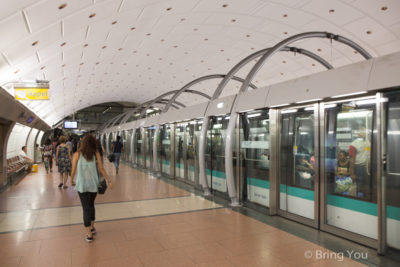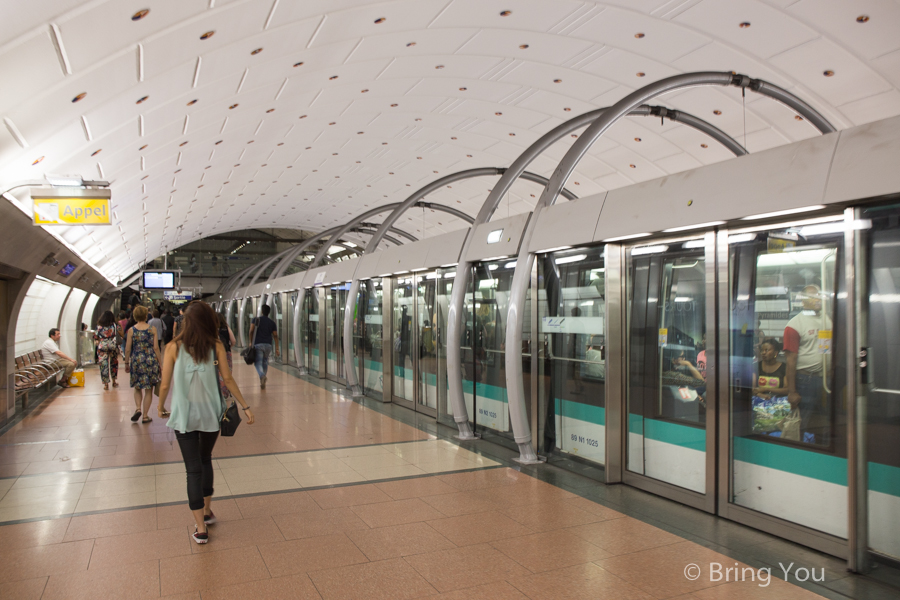
Tackling the public transport network in Paris like a local is a daunting task, especially for first-time visitors.
Think about whether you only wanna get around the City of Paris or will you also plan to reach the suburbs and cover further areas within the Grand Paris.
The metro and bus system covers the Eiffel Tower, the Louvre Museum, Notre Dame Cathedral, the Basilica of the Sacred Heart, and the Champs Elysees. However, you will need to do some homework to get the transportation right if you wanna include the Palace of Versailles, the Palace of Fontainebleau, and Disneyland Paris on your bucket list. These attractions belong to the Greater Paris area and you will need an RER train to get there from downtown Paris.
Here I’ll give you an ultimate explanation of the traffic system in Paris, buying tickets and handy travel passes to save some bucks.
Paris Public Transportation Map
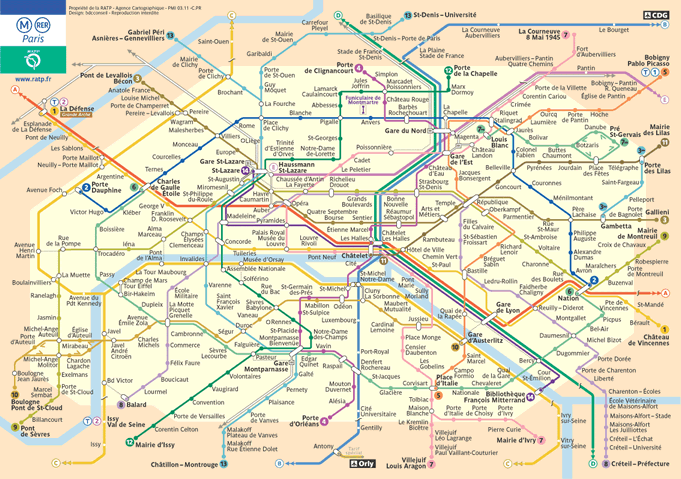
The City Of Paris
The City of Paris refers to the inner core of Grand Paris. It’s indicated as the lighter yellow coverage as you can see on the map below.
The City of Paris covers Zone 1 and 2 with major attractions including the Eiffel Tower, Louvre Museum, Notre Dame Cathedral, Basilica of the Sacred Heart, and the Champs Elysees.
To get around this area, you can choose between the metro, bus, and the Vélib public bike system with applicable travel passes such as the T+ ticket and Navigo Weekly Découverte card.
The City of Paris is divided into 20 districts (arrondissement) enveloping the scenic Seine River at its heart. The map below breaks down the major attractions in each district.
- Districts 5, 6, and 7 take over the left bank of the Seine River. This is where most of the landmarks are located such as the Pathéon, Eiffel Tower, ancient basilicas, museums, and scenic coffee shops.
- Districts 8 and 9 occupy the right bank and are famous as the shopping hub of the city, the Champs Elysees, Arc de Triomphe, and the Paris Opera House.
- District 10 is home to Gare du Nord but it’s also a sketchy part of Paris with pickpockets and crimes.
- District 18 is home to the Montmartre and the Basilica of the Sacred Heart of Paris. However, it’s also a scrappy part of the city with lots of crimes and scammers.
The most common means of transportation in the City of Paris are the metro and buses.
Metro
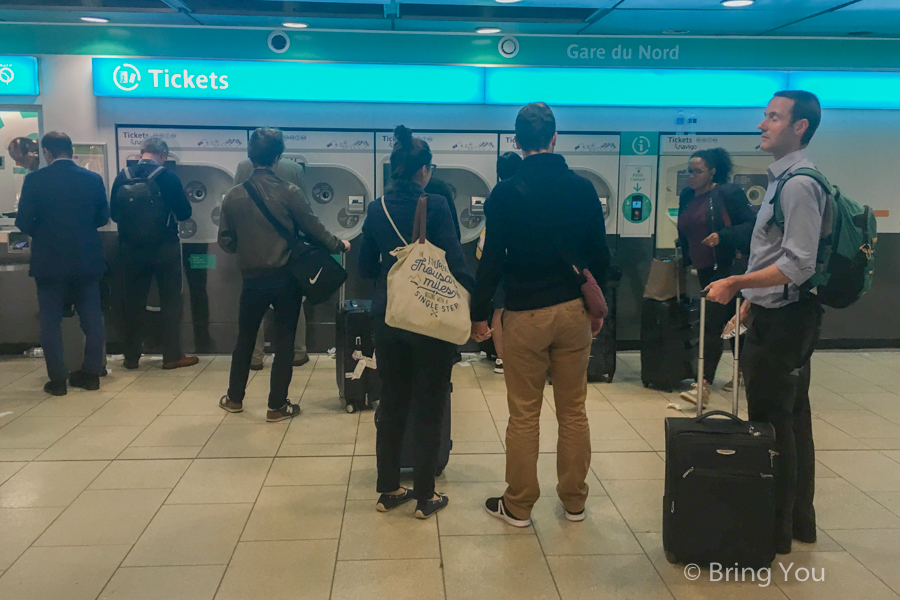
The metro line takes over the central core of Paris, dubbed as one of the busiest and densest metro systems in the world. You can easily go anywhere with your ticket that you can buy at one of the counters. Alternatively, you can use a Navigo Pass.
To top-up your Navigo Pass once it’s nearly expired at the end of the week, reach out to one of the machines like what you see in the picture below to process. The left half of the screen is where you tap the card to top up, while the right side is to buy a new Navigo.
The metro stations in Paris will have a ticket-controlling system like this. If you have a Navigo pass, swipe it once and push the gate when you enter the train. You don’t need to do the same when you leave.
Survival Tips For Riding The Metro In Paris
Don’t overlook the pickpocket issue. They are everywhere and you’re likely to lose your money and luggage if you leave them unattended. This issue has been addressed for so long and the state has been doing a great job in controlling the crimes.
I didn’t spot any suspicious passengers when I took the metro but you shouldn’t turn a blind eye to this issue anyway.
Keep your tickets with you at all times. The inspectors are likely to come up to you anytime. If you don’t have one or lost it, they may demand a fine.
Most metro stations in Paris have no washroom, elevator, or escalator set up.
The facilities of many metro stations are running down with littering and public urination problems even though the city is on the way to improving.
Bus
You can benefit from the T+ ticket and Navigo Weekly Découverte card when riding buses in Paris. It’s not as fast as the metro ride and it’s always hot inside the bus since there are no open windows for ventilation or air-con. On the flip side, riding buses means you don’t have to drag your heavy luggage on and off the stairs as at the metro stations.
Greater Paris
The areas that belong to Greater Paris include Zone 3, 4, and 5. The major landmarks peppered within this area can be listed as the Palace of Versailles, the Palace of Fontainebleau, Disneyland, La Vallee Village Mall, and Charles de Gaulle Airport.
To travel between the City of Paris and Greater Paris, you need an RER train.
To travel between the City of Paris and Charles de Gaulle Airport, you need an RER train, the RoissyBus, and the easyBus. The T+ ticket and Navigo Weekly Découverte card are applicable for Greater Paris.
My favorite way to get around this area is the RER train. Let’s take a look!
RER Train
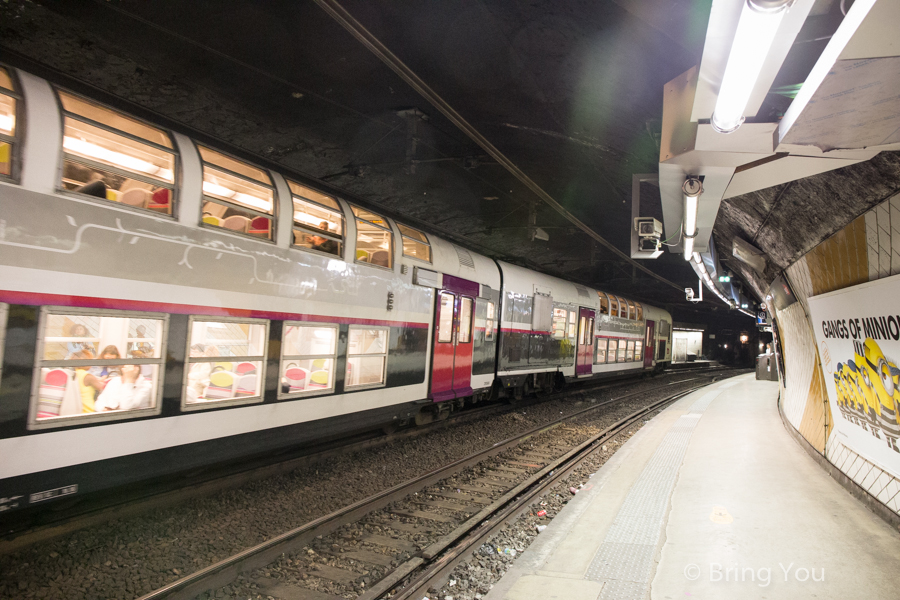
RER is an abbreviation for Réseau Express Régional including 5 different lines from A to E. The most commonly used lines are A, B, and C.
- RER A: City of Paris – Disneyland Paris (view schedule)
- RER B: City of Paris – Gaulle Airport (view schedule)
- RER C: the Palace of Versailles (view schedule)
- RER D: Château de Vaux-le-Vicomte
- RER E: Palace of Fontainebleau
To see an overview map, click here.
Friendly reminder: be aware of canceled trips as it happens quite a lot.
Recommended Travel Tickets And Cards To Get Around Paris On a Budget
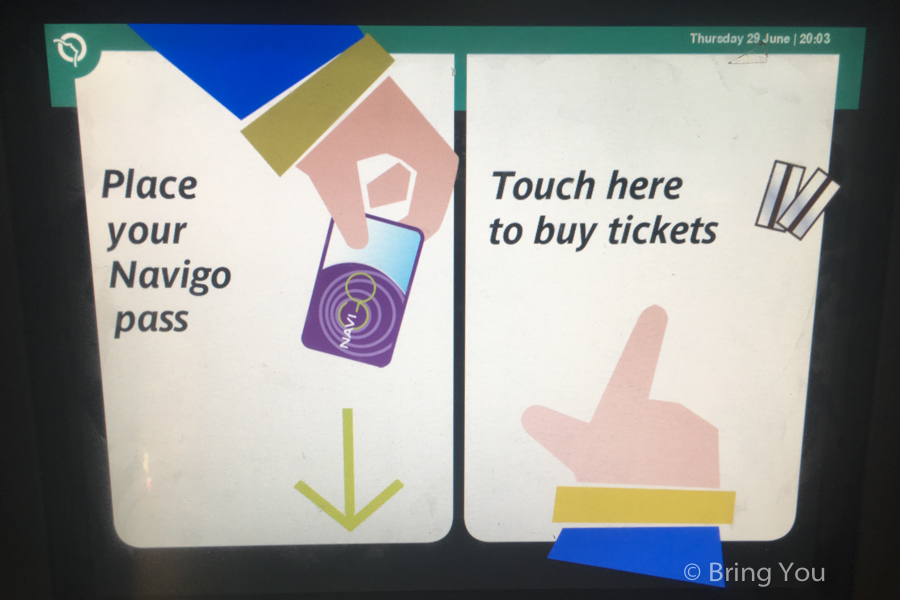
Navigo Découverte Card
This is the best choice for both tourists and locals alike to get around Paris and the suburbs. It offers daily, weekly, and yearly cards with a large coverage of all means of transportation and unlimited rides.
Read more about how to use the Navigo Weekly Découverte card in this article.
T+ Ticket
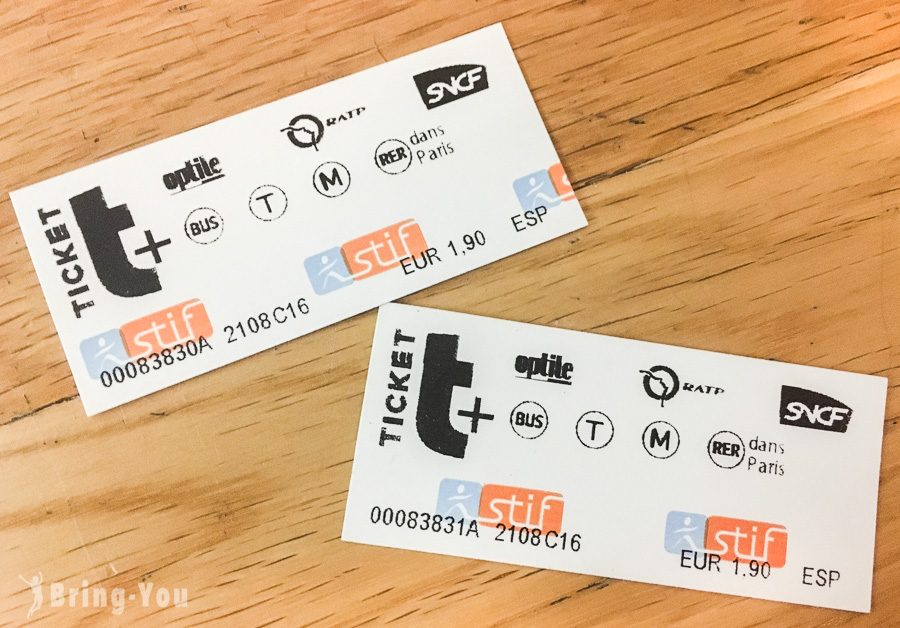
The T+ ticket comes in handy if you don’t plan to use public transport much. The fare for a ticket like this is set at €1,9 (fixed price) for several means of transportation within a time window of 90 minutes. This is a one-way ticket.
The T+ covers all metro rides and RER express trains within zone 1 and 2, all buses, tramways, Montmartre funiculars, and Noctilien night buses. Note that you can’t use the same bus line twice or switch from metro to bus.
You can get a T+ ticket at the vending machine at any metro, RER, bus, or tram station. It’s also available for sale in 10 tickets.
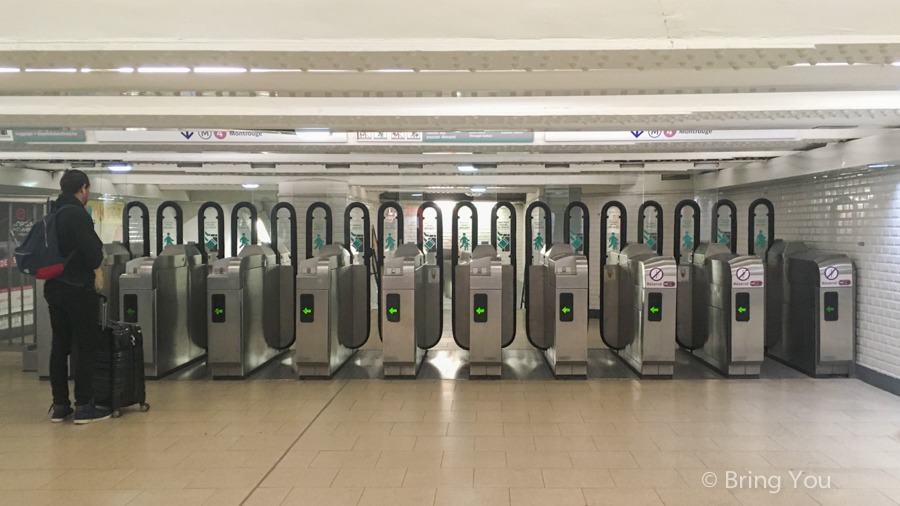
For more travel ideas and things to do in France, check out my tips and ultimate guides below:
- A Step-By-Step Guide To SNCF: Train Types, Timetable, Cheap Tickets, And Uses
- Lyon Travel Guide: How to Spend a Day in Lyon, Attractions, Bouchons, and More
- A Complete Travel Guide to Nice, France: 1-Day Activities, French Riviera Train, Best Eats, Hotels, and More
- How Do I Spend A Day In Monaco from Nice? Circuit de Monaco, Prince’s Palace, and Cathedral
